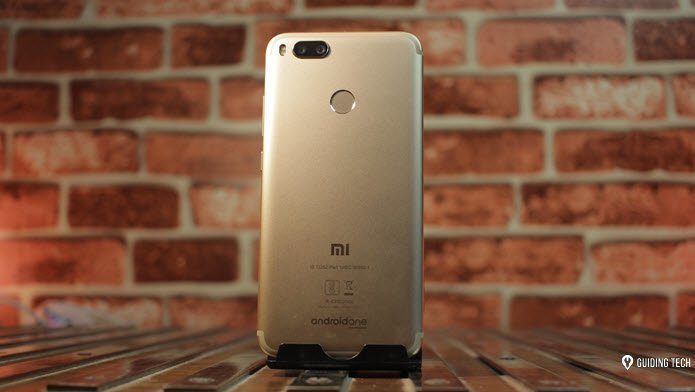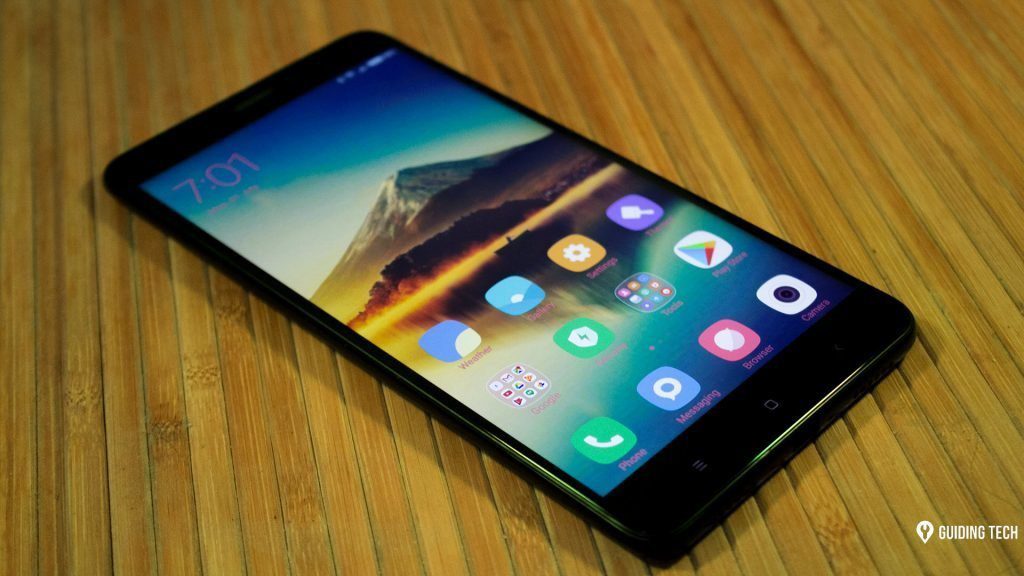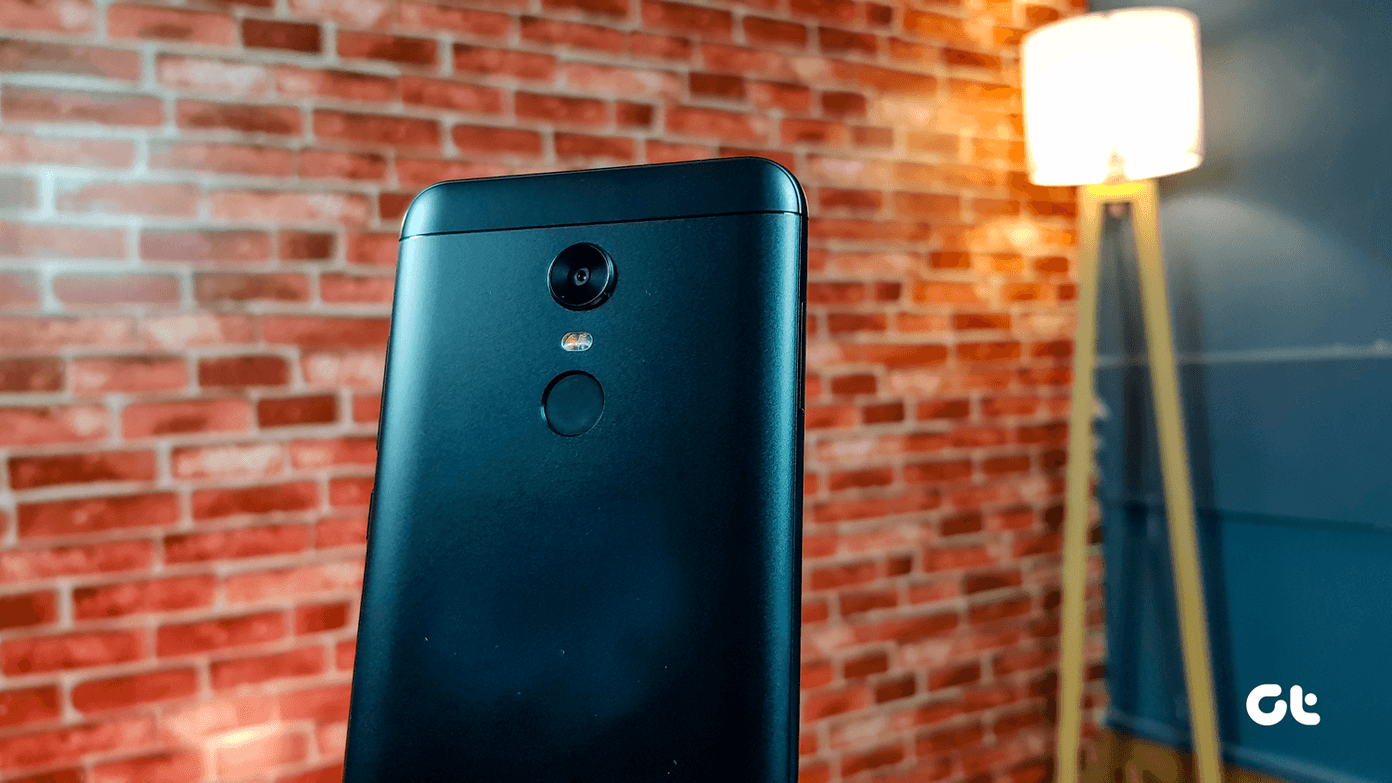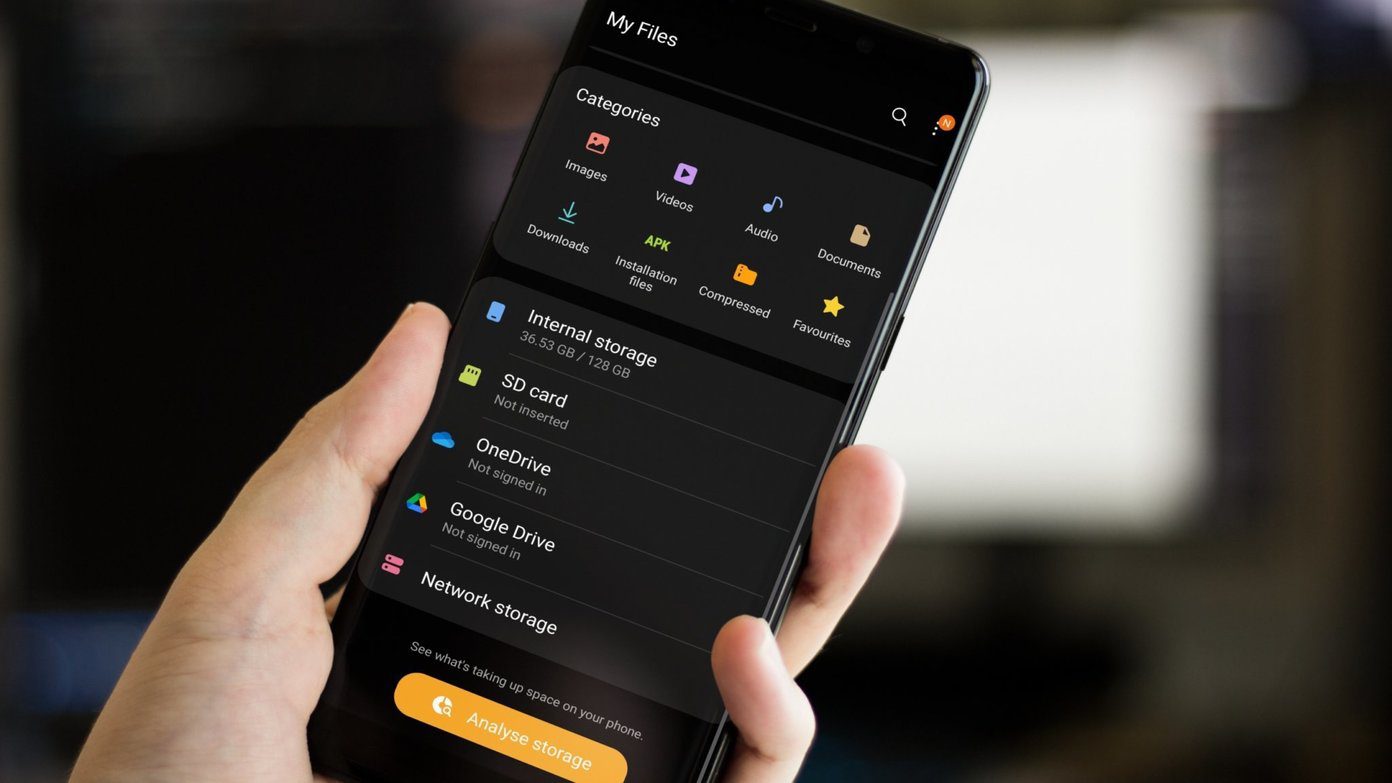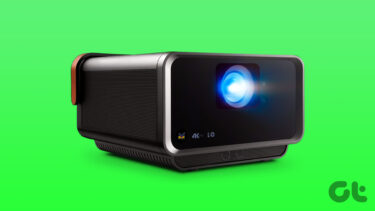We thought that maybe we can make the decision a bit simpler for you. So, here’s the Mi 4 review. Let’s begin.
Design
The very first time I held the Xioami Mi 4, the design of the stainless steel rim around the border seemed close to that of an iPhone. The rim is the most stunning feature when it comes to design; it gives the phone a very premium look. The back, however, is plastic with curved edges and can feel slippery at times. The left edge of the device is given a slot for a full sized SIM card. On the right we have the metallic volume and power buttons. These buttons can be operated comfortably even with one-handed usage of the phone. At the top you have the 3.5mm headphone jack with an IR blaster. At the base, the speaker design also resembles an iPhone with a micro USB port at the other end. The glossy plastic back is a fingerprint magnet and holds the 13 MP camera with flash. At the front you have the 5 inch display with capacitive navigation keys and an 8 MP front camera. Just below the navigation keys you have a very small LED light which is barely visible and doesn’t help in getting notification alerts in normal daylight. Overall, I really like the feel of the phone while holding it and the metal edge adds to the premium looks. Compared to the Redmi Note 4G, the feel of this one is certainly better.
Hardware and Benchmark
The phone is powered by a 2.5 GHz Quadcore Qualcomm Snapdragon 801 processor. That’s one hell of a processor for a phone at this range. Adding to the awesomeness is the 3 GB RAM which can handle anything you throw at the phone. The 16 GB internal storage with no expandable storage is however a deal breaker. One only gets around 12 GB of free space and if you are a hardcore user, you will find yourself running out of memory in just a few days. The 5-inch IPS panel gives a resolution of 1920×1080 at around 441 pixels per inch. Things look pretty good on it, I have to say. The device is powered by a non-removable 3080 mAh battery, but that’s enough to last the day on a single charge for general everyday use. The phone offers a balanced and high performance mode, and the scores on the AnTuTu benchmarking tool were around 44500, which is pretty great for a device priced at Rs. 20,000. The balanced mode underclocks each CPU core to 300 Mhz, saving battery when you are using your phone for only calls and texts. The score in the balanced mode was 31737. So if you are planning to play some high end games on it, don’t forget to toggle it to performance mode or you might experience some lag.
Display
As I mentioned, the Mi 4 features a 5” 1920×1080 display with a 441 PPI pixel density. Specs aside, the display of the device is alluring. Its color reproduction is amazing and vibrant, and can even go toe-to-toe with an iPhone 5S. The viewing angles are great and you will love playing games on it. From bright sunlight operation to dark room reading, the phone works flawlessly. The ambient sensors are very responsive and you will not feel the need to make extra manual adjustments. The Mi 4 doesn’t use Gorilla glass; instead it uses a thinner Concor Corning glass, which gives the same durability to the device but can be used even while you are wearing gloves. I haven’t tested this feature though, so can’t comment on how well it works.
Gaming
The gaming experience is fantastic, thanks to the display and top notch hardware configuration, but the more important question that should be in a buyer’s mind is that for how long he can play on the device before it starts stuttering and lagging and heating up. In my experience of using it, I found that the device had no problems with the low-end games but resource-heavy games like N.O.V.A 3 and Asphalt 8 made the phone temperature rise significantly after only the first 15 mins of gameplay.
While the plastic back absorbs some of the heat produced by the device, the steel rim with the volume and power buttons heat up rather quickly. I had to give my phone a 10 minute timeout to let it breathe and reduce the body temperature after just 15-20 mins of N.O.V.A gameplay. The next roadblock is the mere 12 GB of usable memory. With most of the memory used up by my music, videos, and high-res photos taken by the phone’s camera, you aren’t left with much space for data files of games or other intensive programs. One can only install 2 high end games at the max.
Camera
Now here’s where things get really interesting. Talking about the hardware, the Mi 4 comes with a 13 MP rear camera and an 8 MP front camera. The MIUI 6 camera comes with both basic and advanced features. The rear has f/1.8 aperture that adds to the low light photography. Once you tap on a subject, you will get a focus circle that controls the exposure. The auto focus time is just about 0.3 to 0.5 seconds. Thanks to the great hardware, the camera supports real-time object tracking even when the object is moving. The phone comes with both a Normal and Live HDR feature that makes the photos even more stunning. You can choose different shooting modes and filters from the camera and track the changes in real-time. Here are some of the photos taken by the rear camera. For those who love selfies, the large viewing angle on an 8 MP camera makes for clear and crisp pictures. You can easily set the timer while taking selfies and the timer is placed in such a position that it compels you to look into the lens rather than the screen while taking selfies. Here are some examples of selfies taken from the device. The video also comes with the great 4K recording capability of the device.
Battery
The Mi 4 is powered by a 3,080mAh non-removable battery, which was able to last a day and a half on normal use. While watching videos on adaptive brightness, the battery lasted as long as 8 hours. One great thing about the device is that it comes with Quick Charge 2.0. With a power adapter that supports both 5V 2 Amps and 9 Volt 1.2 Amps, users can get the initial 60% charge on the battery in just 30 mins. It’s great when you quickly want to charge your phone on the go. The MIUI 6 comes with a battery saving mode and users can switch between performance mode and a balanced mode that underclocks the CPU cores while the device is not in heavy use. While playing games on performance mode, every 20 mins of gameplay on N.O.V.A 3 and Asphalt 8 was taking up 10% of battery life. That said, battery life is not too much of a concern for Mi 4 users.
Software
The phone runs on Android KitKat 4.4.4 with the MIUI 6 framework. When compared to the previous version, the MIUI 5, MIUI 6 has a lot of changes in color, graphics, and features. There are many amazing animations and the developers have played with colors to give the best visual effects. I didn’t even miss Lollipop with all the cool and interesting features directly offered by MIUI. The themes offered by the MIUI community are just amazing and a lot of them are now designed keeping the Indian community in mind. From the clock to security and weather, all the apps are completely redesigned and you will love the smooth animations MIUI offers. The Quick Settings feature is, however, no longer in MIUI. One thing to really emphasize in MIUI 6 is how it handles incoming notifications in a way that you will never find them to be a disturbance.
Come back for more: As there’s a lot to talk about with the all new MIUI 6, we thought it would be better to take it up in a separate article. So here’s yet another amazing reason to subscribe to us if you haven’t already.
Pros and Cons
Before we wrap things up, let’s have a quick look at some of the pros and cons of the device.
My Verdict
While the Mi 4 shows off the engineering skills of Xioami, they could have done better with all the heating complaints they have received in the past. The camera and software is great, but performance-wise there’s some scope for improvement. Overall, this seems to be a good phone at this price point if you’re not into gaming. The 64 GB Mi 4 is coming soon so better to go for that. I don’t know about you but 16 GB doesn’t cut it for me. The above article may contain affiliate links which help support Guiding Tech. However, it does not affect our editorial integrity. The content remains unbiased and authentic.




































